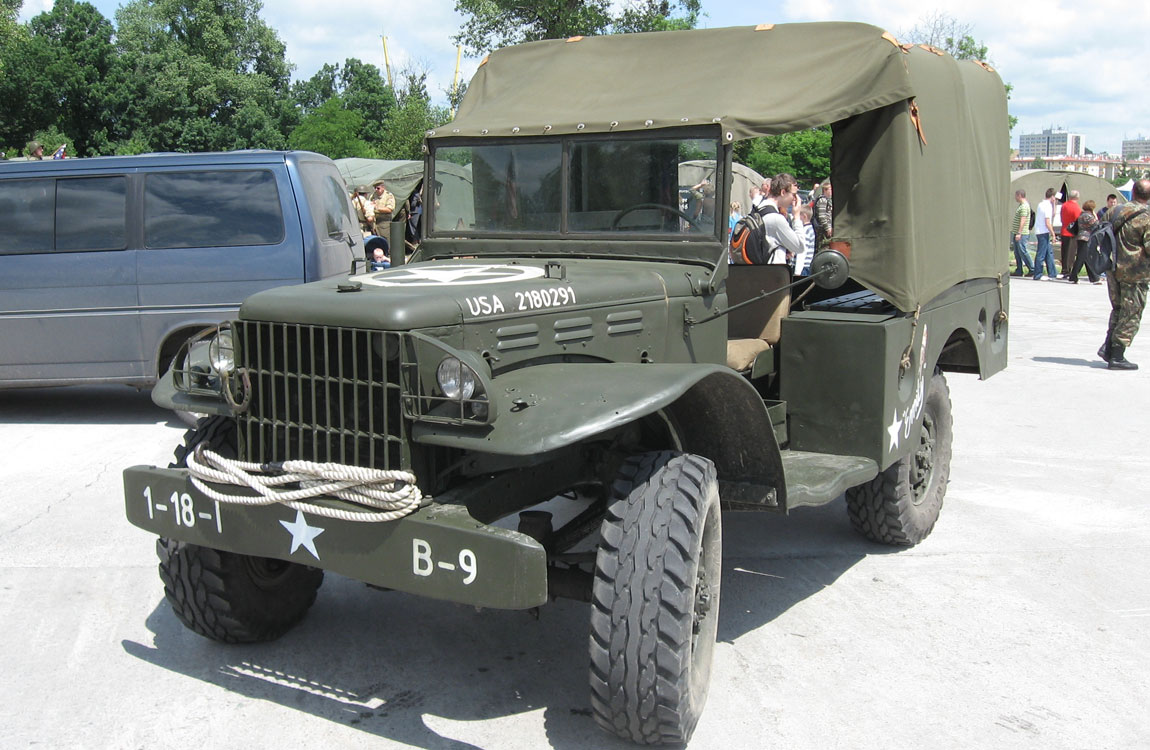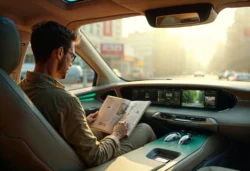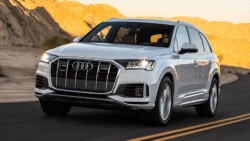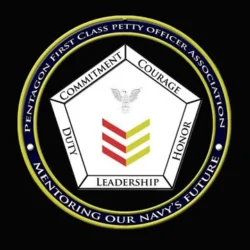The Jeep has been the stalwart of many military operations, from medical evacuation in jungles to towing artillery on the front lines. But how did this humble workhorse get its name?
The Army put prototypes from Bantam, Willys, and Ford through intensive testing. Ultimately, Delmar “Barney” Roos’s Go Devil engine would win the contract for initial production.
The History
In 1939 the world was waking up to the fact that it might be headed for another worldwide conflict. The US Army, suffering from neglect and restricted budgets, knew that it needed a new light-duty vehicle to get them to a place they couldn’t otherwise reach when it took horses or motorcycles with sidecars to traverse them.
So, the military requested proposals in 1940, asking companies to step forward with designs for a small four-wheel drive vehicle that was compact, lightweight, and could carry a machine gun. American Bantam and Willys-Overland both stepped up with prototypes. The Ford GP and the Willys Quad were both tested, and eventually, a decision was made – the Bantam model would be called the BRC-40, and it won the contract due to its excellent build quality, low production costs, and ability to meet the Army’s deadline of 75 vehicles a day.
The Bantam design was largely the work of Chief Engineer Harold Crist, who enlisted the aid of freelance Detroit designer Karl Probst. Both had worked at prestigious carmakers like Duesenberg and Stutz and had strong backgrounds in motor racing. The Jeep was a true cross-over, marrying the utility of a truck with the performance and handling of a sports car.
During testing at Camp Holabird, the prototypes proved themselves in numerous ways. Soldiers raced them up forty percent grades; they hauled wounded soldiers to the frontline hospital and fitted with a radio became mobile command posts. The little Jeep was a godsend, and the name stuck.
How the name was chosen is a bit of a mystery, but one theory has it that test driver Irving Haussman gave the first press reference to the new vehicle when asked by syndicated columnist Katherine Hillyer after he demonstrated Willys’ new trucks by driving them up the steps of the Capital Building. Haussman simply replied, “Jeep,” and the name stuck.
A similar story can be applied to how the acronym HMMWV, which was later used for the replacement of the military jeeps in the 1980s, got its name from the letters GP and P. The GP part likely derived from the fact that it stood for general purpose and phonetically sounded similar to jeepy.
The Design
A legend among the military, the old Jeep earned a place in the hearts of warriors worldwide. The vehicle was fast, nimble, and tough. It could travel over any terrain and easily climb forty percent grades. Fitted with a radio, it became a command vehicle. A frontline ambulance or a field gun mount could be fitted to it. And when a special set of wheels was added, the Jeep would even run on railway tracks.
In 1940, just a year before America entered World War II, the Army Ordnance Technical Committee issued a call for a four-wheel drive vehicle that would be light enough to be driven by infantry and have a payload capacity of at least 1,300lb. This led to the design of a small prototype by the American Bantam Car Company that was submitted for evaluation. The Army selected the Bantam’s design and asked that the Willys-Overland Corporation produce it within 75 days.
Willys-Overland took the design of the Bantam Blitz Buggy and refined it. They made it slightly bigger and fitted a larger engine to meet the Army’s specifications. This new model was dubbed the MB and was manufactured by Willys at their factory in Toledo, Ohio.
The MB was such an astounding success that the Army ordered additional units from Willys and from Ford, which had also obtained the license to produce the vehicle. The Ford versions were designated the GPW, with G standing for government-contract vehicles, P for a wheelbase of 80 inches, and W for the design license secured from Willys.
As the war progressed, the GPW was used in every US military branch. An average of 145 were supplied to each infantry regiment. They were modified to plow snow, carry supplies across long distances in the desert, lay telephone cables and sawmills, and operate as firefighting pumps. When equipped with flanged wheels, they could even be used as an amphibious vehicle to cross waterways.
By the end of the war, the MB had evolved into the M38 military Jeep, which featured a waterproof ignition system and was in production from 1950 to 1951. This was followed in 1953 by the CJ-3A, which was fitted with the Hurricane F-head engine and had a rounded body style.
The Development
In 1939, as Germany and Japan ravaged Europe, the U.S. military was dangerously ill-equipped, a victim of neglect and restricted budgets. The Army needed modernization in order to fight the global war that was soon to come.
Engineers at Willys-Overland, Ford, and Bantam began work on small, four-wheel drive vehicles that could carry soldiers, ammunition, and equipment across difficult terrain. The first prototype, the Quad, was powered by a Willys-Overland “Go Devil” engine that delivered 60 horsepower and 105 foot-pounds of torque. This far outperformed the Army’s initial specifications requirements and easily beat the competing engines in both the Bantam and Ford models.
The Army put the Quad and other prototypes through rigorous tests and ultimately decided to standardize one design. Willys won out due to its superior engine and the fact that it was easier and cheaper to produce than the other two models. The War Department contracted with Willys to build 16,000 of the standardized vehicles, which would later be called the Willys MB. Ford stepped in to help meet the demand for these little cars, and their version of the Jeep was known as the Ford GPW.
Both Willys and Ford made use of the same basic blueprints for their military jeeps, and both companies improved upon the original designs. In addition, both companies shared some of the same parts, which reduced production costs and allowed for quick modifications.
As the war progressed the Jeep became a familiar sight in US Army units, and it wasn’t long before returning GIs developed an affection for the little car. In this environment, the name “Jeep” came to be used, although some claim that the letters GP stand for government and that P stands for patrol car.
As the old military jeep grew in popularity, fertile minds were busy finding more and more possible uses for it. The little truck became a frontline ambulance, a troop carrier, a mobile command post, a gun platform, and much more. Eventually, it was replaced by a new military vehicle with an acronym that sounded just like its predecessor: the Humvee (HMMWV). As a result, the Jeep gained even deeper fame, and today is perhaps more widely recognized than ever.
The World War II Years
As World War II began, the United States Army understood that it was going to need vehicles that could operate on land and at sea. It had to be able to carry troops, equipment, supplies, and ammunition, serve as field ambulances and firefighting pumpers, and, if the terrain called for it, even run on railroad tracks. The DUKW, which the Ford Motor Company built, had proved to be a very effective military vehicle but was not the answer for all situations. The Army decided to seek bids from automakers for a light, four-wheel drive truck that could meet the needs of the troops and operate well in both dry land and waterborne conditions.
About 135 automakers got the message and started working on designs for a small, four-wheel drive military truck. The Army would accept only the best design, and after a short time, two companies were finalists for the contract – Bantam and Willys-Overland. In November of 1940, Willys-Overland delivered its prototype Quad (named for the 4×4 system it used) to the Army. This was to be the template for all future military Jeeps, including the MB and CJ series and even today’s Wrangler.
Willys-Overland’s chief engineer, Harold Crist, recruited freelance Detroit designer Karl Probst to help with the project, and together they completed the prototype in five days – a remarkable feat considering that the American Bantam company was almost bankrupt at the time! The Army accepted the design and gave all the plans to both Willys-Overland and Ford to produce them as soon as possible.
During World War II, the jeep became an iconic symbol of the war. It was the workhorse of the Allied forces, performing a vast array of tasks everywhere that Soldiers were fighting. From medevac duties in the Pacific jungles to armed reconnaissance in North Africa and towing artillery on the Russian front, jeeps were the ultimate utility vehicle of World War II. They earned the nickname “Jeep” for their versatility. It is unclear how the name came about, but one theory is that test driver Irving “Red” Haussman, who was asked to demonstrate Willys-Overland’s new trucks early in 1941 by driving them up the steps of the US Capitol, referred to the vehicle as a Jeep when asked by syndicated columnist Katherine Hillyer.







